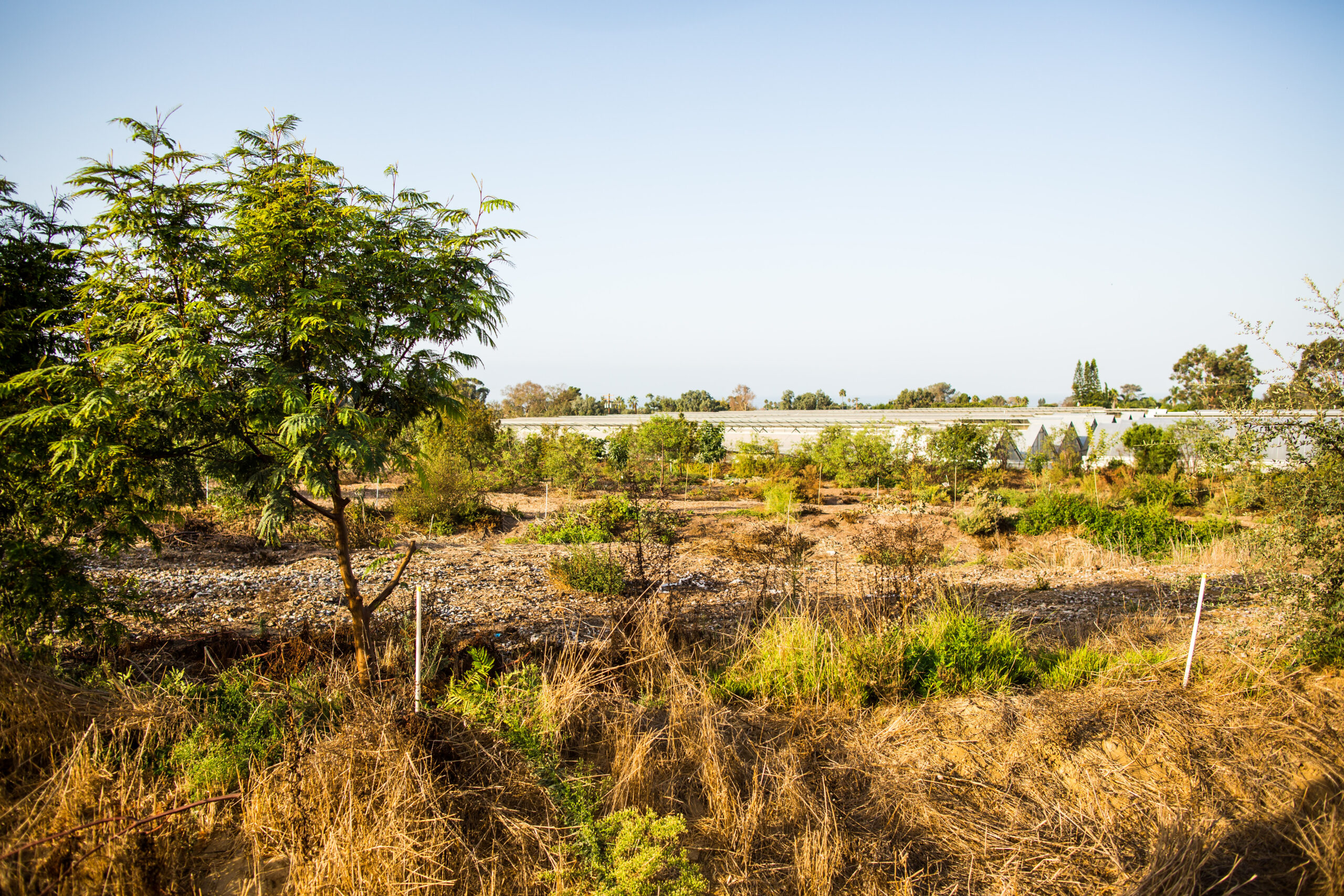We’re back with the next installment of Everything You Need to Know. (See previous posts here and here.) In this series, we explore different terms and techniques used at Coastal Roots Farm. Got a topic you’d like to see covered? Leave a comment below!
If you’ve spent much time at Coastal Roots Farm, you’ve probably heard about or visited our food forest—but maybe the term remains something of a mystery. Why plant a food forest instead of vegetable beds? How does food forestry connect with permaculture and agroforestry practices, and where do Jewish agricultural values fit in? For the month of November, we’ll be talking about food forests—from garden-sized to large-scale—and their potential for increasing soil fertility, biodiversity, and food security. We’ll cover the historical and cultural background and learn from Food Forest and Vineyard Coordinator LyOr Rabinowiz. Let’s get started!
What is a Food Forest?
A food forest (also called a forest garden) is a productive perennial-based ecosystem in which layers of trees, shrubs, roots, vines, and cover crops grow together. Rather than the carefully-plotted rows of plants that you might find in a typical garden or farm, these spaces imitate wild forests, serving as a home to diverse plants and animals. When farmers design food forests, they are drawing from ancient and holistic perspectives on water, soil, plants, animals, and people.
Food forests, like naturally-occurring forests, work in layers and weave many diverse elements together. Picture a rainforest: a canopy layer providing shade, crawling vines making their way to the sunshine, and smaller plants scattered beneath the trees on the forest floor. Food forests function the same way, though their architecture is mapped out with intention and planning. Not only does a food forest produce food to be enjoyed, it is designed to harvest rainwater, recycle nutrients to build healthy soil, manage pests, and provide a home for wild and domesticated animals.
The Coastal Roots Farm Food Forest
Coastal Roots Farm’s food forest started in 2015 with the completion of the major earthworks to create our system of swales. A swale is a trench dug on contour with a berm on the downhill side designed to harvest and direct rainwater. Our food forest is designed to house a combination of trees, shrubs, forage, and pasture. In addition to providing produce, our food forest will provide food for grazing poultry and livestock. It’s a work in progress and continues to develop with the help of our community. The majority of the trees were planted at the first annual Tu B’Shvat Food Forest Festival in January of 2016. At the second annual festival we planted trees in the eastern side of the forest and seeded cover crop. (This year’s Tu B’Shvat Food Forest Festival will take place on Sunday, January 28—stay tuned for details!)
At Coastal Roots Farm, we approach sustainable agriculture from a Jewish perspective. In the food forest, this means practicing pe’ah and orlah. Pe’ah is the Jewish tradition of leaving a portion of land—along with its forgotten produce and grain—for the poor, the stranger, or the hungry to glean. In alignment with this practice, we are developing a public food forest trail for community members to “eat their way through” and spend time enjoying nature. Orlah is the Jewish practice of refraining from harvesting fruit for the first three years and donating the harvest of the fourth year. This practice encourages us to establish a relationship with trees and give them time to establish roots in the ground.
If you take a walk through our food forest trails, you’ll find figs, pomegranates, olives, carobs, pineapple guavas, elderberries, mulberries, sapotes, rose apples, and more. Nearer to the ground you’ll notice herbs like rosemary, sage, thyme, and oregano. We’ve also planted annuals including tomatoes, watermelon, zucchini, winter squash, pumpkins, and marigolds, and we even have edible “weeds” such as mallow, nettle, and milk thistle.
Want to get involved?
We would love to see you in the forest! Save the date for the first public food forest tour on Sunday, November 19 at 3 p.m. Coastal Roots hosts volunteer hours on Wednesday mornings from 8-10 a.m., and you can also apply to join our Volunteer Corps and serve as a committed volunteer in the food forest. (Be sure to check out the Volunteer Corps if you are interested in learning about plant propagation, soil building, or water harvesting.) And if you’re considering starting your own backyard food forest, take a look at this wonderful article from Modern Farmer and start making your landscaping a beautiful and productive space!

